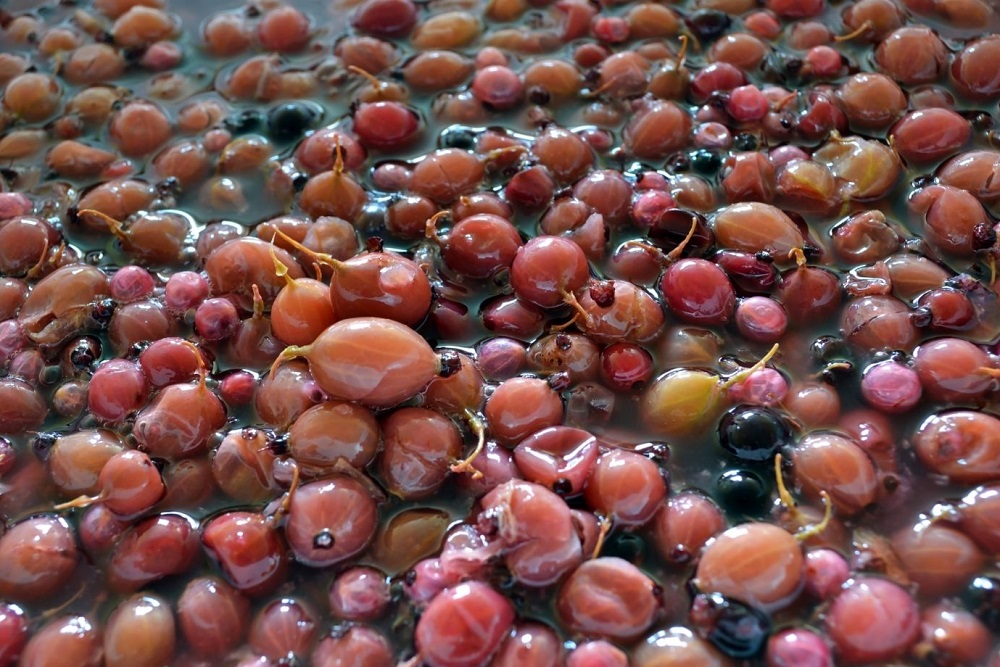One of the biggest challenges in winemaking is stopping the process of fermentation. This is when yeasts consume the sugars from the wine, turning them into alcohol.
The fermentation process will usually stop on its own when all the sugar has been converted, or when the alcohol concentration reaches between 14-18%.
There are, however, many occasions where your wine will reach the desired level of sweetness and you’ll want to keep it just as it is without further fermentation. This is when the question of how to stop fermentation in winemaking becomes an increasingly important one.
This guide will take an in-depth look at three of the most effective and widely-used methods for stopping wine fermentation.
1). Adding More Alcohol
Firstly is the method of adding more alcohol – arguably the simplest way to stop wine fermentation.
Yeast stops its function when the concentration of alcohol reaches around 16%. In fact, depending on the exact yeast strain, the alcohol concentration can be anywhere between 14-18%.
Therefore, by simply adding more alcohol to your wine, you’ll effectively stop the fermentation process. Below are a few straightforward steps explaining how to achieve this.
Method
- Firstly, rack the wine into a sterilized demijohn. This helps to remove all the sediment from the wine.
- Then, add your chosen alcohol to the wine until the alcoholic concentration reaches about 16%. The best type of alcohol for this is either vodka, brandy, or grape distillate.
- After you’ve added the extra alcohol, leave the wine for a week and check for any signs of fermentation. If there aren’t any, rack the wine a final time, then proceed to bottling it.
A significant downside of this method is that the added alcohol will notably alter the taste of your wine. If you use vodka, it will also give the wine an unpleasant scent.
2). Cold Shock

For this method, you’ll need to cool your wine down to a low enough temperature that causes the yeast to stop its activity and precipitate on the bottom of the demijohn.
A major plus point for this method is the fact that it has no influence whatsoever on the flavor, aroma and potency of the wine you’re making.
Follow the steps below to use this particular technique.
Method
- Firstly, store the wine in either a very cold room or a refrigerator for 3-5 days. You’ll need the temperature to be between 36-50℉ to take full effect. It’s important to keep a close eye on the temperature at all times, as it’s essential that it stays above the freezing point.
- During the 3-5 days, fermentation should completely stop. A good way of checking whether the technique has worked or not is by looking for any sediment on the bottom of the demijohn.
- The sediment is then removed by racking the wine into a sterilized demijohn. This needs to be done in a temperature of 61℉ or less.
- Filter the wine through a filter and into another sterilized demijohn.
- Finally, leave the wine to rest at a normal temperature for around a week. Make sure to check it daily, and if you notice any signs of fermentation, repeat the process again.
The downside of this method is that it’s extremely difficult to remove all the yeast from the wine. Often, some of the yeast will be filtered with the wine during the racking process, meaning that fermentation will start again.
However, you can prevent this from happening by adding roughly 0.14 oz. of sulfur trioxide to each 2.6 gallons of your wine. Unfortunately, it’s worth noting that these preservatives will lower the overall quality of the wine.
3). Pasteurization
The most efficient method for killing off wine yeast is through pasteurization. This can be done by heating the wine to a high enough temperature to kill the yeast, usually anything above 104℉.
Below are a few simple steps explaining how to achieve this.
Method
- Firstly, rack your wine into a sterilized pot.
- Then, heat the wine to a temperature of around 150-160℉ and maintain the heat for 10-20 minutes.
- Not only will this kill off the yeast, it’ll also eliminate a number of other organisms present in the wine.
- After the heating stage, cool the wine down as quickly as possible to a temperature of 50-61℉.
- Finally, bottle the wine immediately, and then seal it hermetically (airtight).
- Note, an alternative, and just as effective method is to rack the wine directly into the bottles, pasteurize the bottles, and then seal them.
The downside of the pasteurization method is that it can be difficult to maintain a constant heat for up to 20 minutes. It’s also challenging to cool the wine quickly enough after the heating process.
This method will alter the flavor of the wine, and in order for the whole process to be effective, contact of the wine with the outside environment should be limited as much as possible after pasteurization.
Frequently Asked Questions
What is malolactic fermentation?
Malolactic fermentation is a process where the malic acid in wine converts to lactic acid. This process reduces some of the acidity and tartness in wine, making it softer-tasting.
Rather than yeast, it’s bacteria which plays a fundamental role in this type of fermentation.
Can Campden tablets stop fermentation?
While it’s true that these tablets can limit fermentation and delay it for a period of time, they’re not a magic pill that can stop the process of fermentation completely in its tracks.
They’re not designed for this purpose, and fermentation will almost always overcome the effects of the tablets after an initial struggle.

